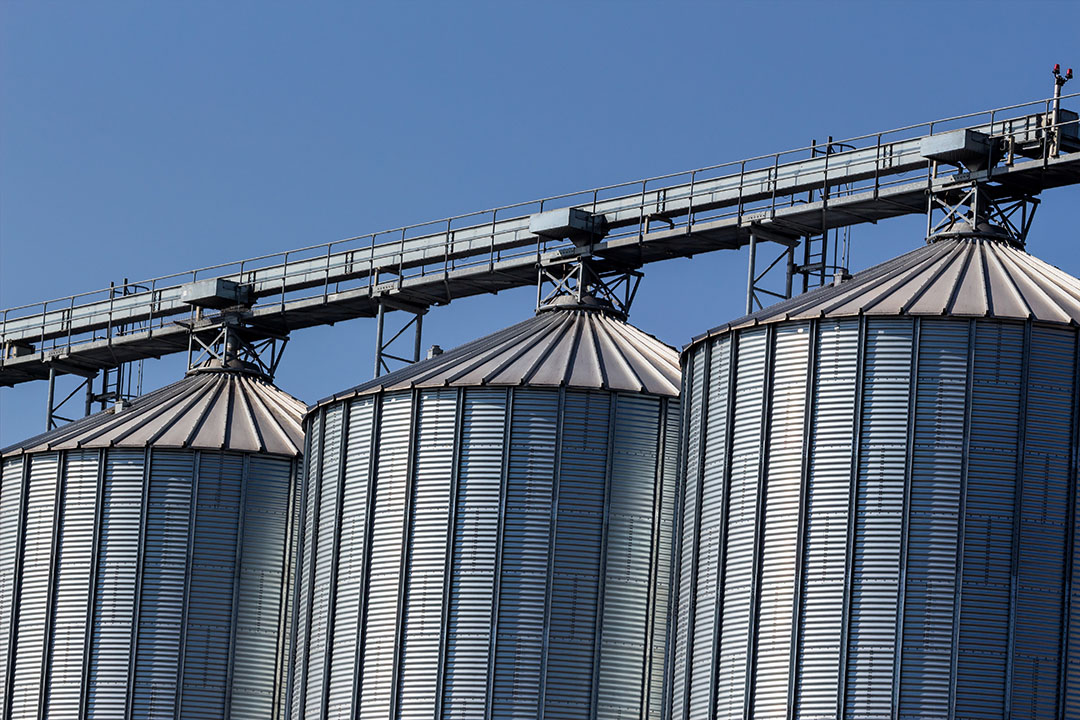Minimising mycotoxin risks in real time

A new post-harvest decision support system for minimising the risk of contaminated batches of stored cereals has been developed. The tool has been built by combining real time detection of CO2 in grain silos and linking this to biological models of boundary conditions for growth and mycotoxin production and to the DML/mycotoxin models.
Cereals are the most important staple food. According to the Food and Agriculture Organization of the United Nations (FAO), the world cereal production in 2017/2018 was greater than 2,700 million tonnes of which 850 million were utilised for human consumption (42.4%), animal feed (35.7%) and other users (21.8%). However 10-15% is lost each year post-harvest due to pest and fungal spoilage.
Fungal contamination
Fungal contamination implies not only a reduction in nutritional quality but also potential contamination with mycotoxins. Mycotoxins are toxic compounds that can cause a variety of adverse health effects to both humans and livestock. Regulations exists for some key important mycotoxins, which include aflatoxins (Class 1- International Agency for Research on Cancer), ochratoxin A (Class2b), fumonisins, zearalenone deoxynivalenol and T2 and HT2 in the EU and many countries worldwide (EU, 2006a,b, 2012).

Managing mycotoxin risks
Mycotoxin contamination can occur along the cereal and other food chains (Figure 1). The risk management framework can be utilised to try and manage mycotoxin contamination. This includes information on the boundary moisture content (m.c.) and temperature conditions for growth and mycotoxin production by the key spoilage moulds in key commodities including cereals and raw materials for animal feed. This can be used in the development of control measures to manage mycotoxin levels in foods, and to meet food safety objectives.
Good storage practices
Cereals are frequently harvested, dried and stored for the medium or long term. Good storage practices (GSP) are indispensable to provide safe grain. The Home Grown Cereals Authority published a storage guide for cereals and oilseeds highlighted the following as the key stages:
- Store hygiene is important for eliminating sources of contamination, from storage fungi to insects and mites;
- Efficient grain drying to safe levels m.c. levels (e.g., wheat =14.5%; maize=15% m.c);
- Effective monitoring of grain during storage to ensure that initiation of spoilage or infestation does not occur.
Water availability
At present, temperature and/or sometimes relative humidity (RH) sensors on steel fixed cables are often used in grain silos. They are used to monitor quality and detect changes that may be related to spoilage and therefore quality deterioration due to mould growth or insect infestation. A wide pool of data has now been gathered on the interacting conditions of water availability (water activity, aw) and temperature on optimum and marginal boundary conditions for fungal colonisation and mycotoxin production. This has resulted in the development of predictive models of the relationship between storage aw (m.c.) and temperature and the relative risk of growth or mycotoxin production. Currently Cranfield University is developing probabilistic models for fungal growth and mycotoxin production in different cereals and nuts (Figure 2). Different levels of risk can be established and consequently this tool can provide valuable information for silo managers.

Detecting changes with CO2 sensors
The approach of using temperature sensor-based networks was developed by distributing sensors within the silo. Their distribution follows a matrix configuration in order to have real time spatial information of the different temperatures registered. However, as grain is a very good insulator, the question arises as to whether temperature reflects earlier changes than CO2, and thus the latter may be a more sensitive indicator of initiation of mould spoilage or pest activity in stored cereals.
Use of CO2 sensors
Recently, Cranfield University has examined the use of CO2 sensors, as cereals have a stable background respiration rate when stored safely. Any change in this CO2 level would indicate a problem and by having a matrix of sensors with integrated CO2, temperature and RH, it is possible to identify a problem and where the problem may have occurred to facilitate remedial actions such as:
- immediate ventilation,
- removal of the problem grain sector, or
- emptying the silo to avoid further spoilage mould colonisation or mycotoxin contamination (Figure 3).

Different cereals and different mycotoxins
The use of CO2 as an early warning of biological changes in stored grain has been examined for different cereals and different mycotoxins. For example, the relationship between respiration of wheat and maize grain stored under different water activity x temperature conditions inoculated with Fusarium graminearum and Aspergillus flavus respectively. The changes in CO2 production were used to calculate the relative dry matter losses and this was correlated with contamination of these grains with zearalenone and aflatoxin B1 respectively. This is linked to the EU regulation limits, and thus during storage it is possible to obtain real time information on whether these have been exceeded or not in the short and medium term storage of these cereals.
References available on request
This study was carried out within the MyToolBox project, which has received funding from the European Union’s Horizon 2020 research and innovation programme under grant agreement No. 678012.
Authors:
E. Garcia-Cela, B. Ingram, C, Verheecke-Vaessen, A. Medina, and N. Magan, Applied Mycology Group, Environment and AgriFood Theme, Cranfield University, UK







